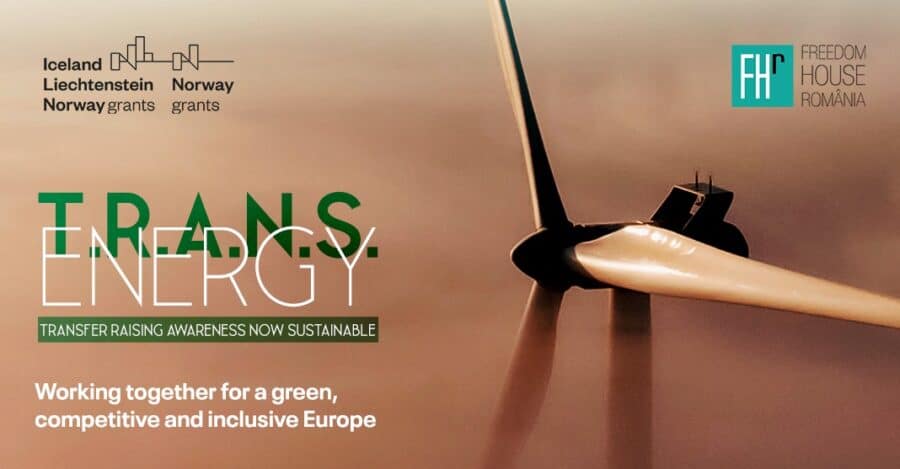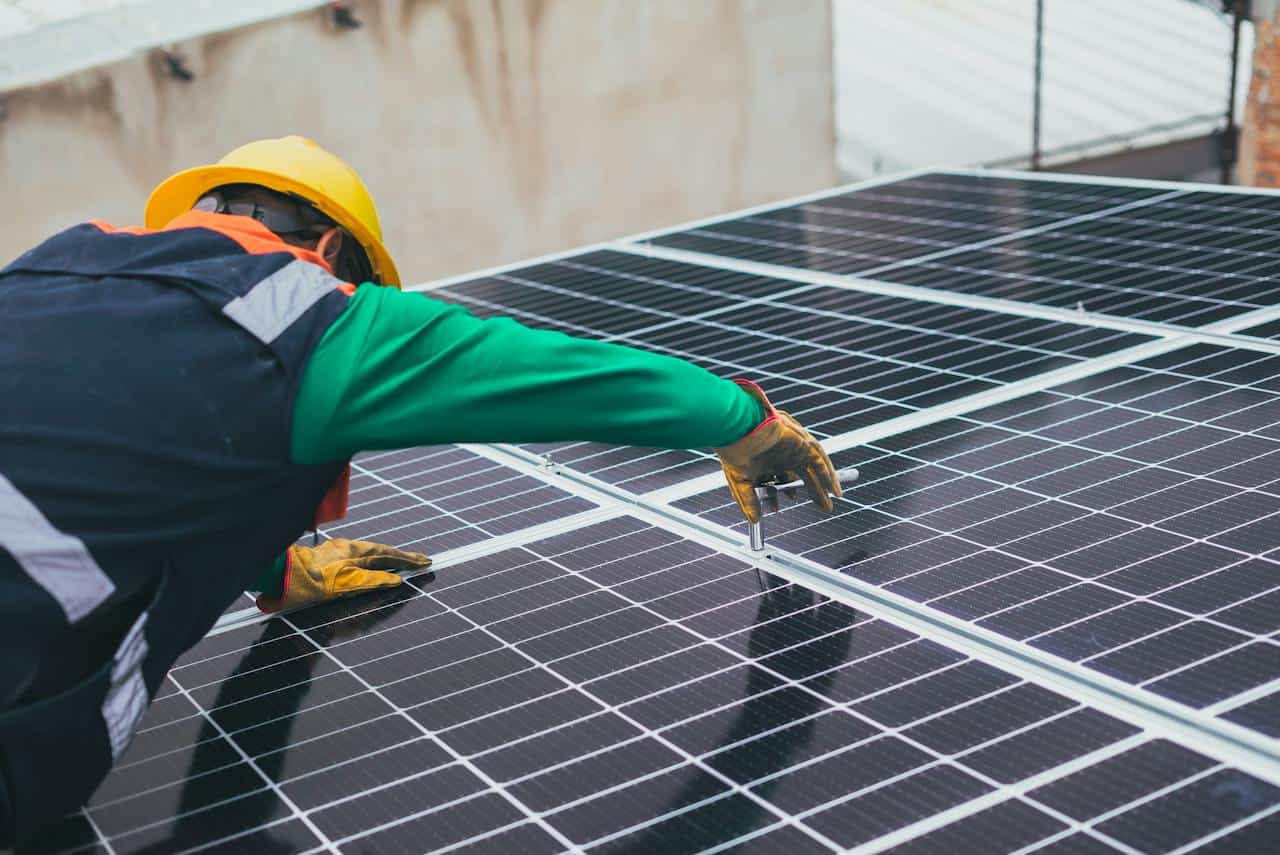I am a prosumer since 2021. But this is not a discouragement article, but a warning of some of the difficulties facing owners of photovoltaic systems for electricity.
Green House programmes are today overwhelmed with applicants. The state provides a significant proportion of European funding for electricity or hot water systems, housing envelope solutions, etc.
Since the energy crisis has worsened, the Ministry of the Environment’s programmes through the Environment Fund Agency (AFM), especially the Photovoltaic Green House, have been taken by storm: online applications are sold out within minutes.
The year 2019, when I applied for a photovoltaic panel system through Casa Verde, was easy for applicants: you submitted a simple file to the County Administration of the Environment Fund (AJFM), including a copy of your identity card, extract from the land register of the house and proof that you have no debts to the state.
Read also: How to produce more green energy. Experience exchange between Romania and Norway
You also fill in an application form with identification data. In August 2019, when I submitted the application, there were no queues, there were no crowds. But submission was done physically, not online, like later.
There followed an endless waiting until the following were approved:
1. The file submitted by the applicant, checked administratively
2. The list of companies that had signed up to carry out the work of installing the systems
I am a prosumer from 2021. What took so long
The wait was long, but since there was no energy crisis yet, there was no rush. One year later, in August 2020, I signed a Non-refundable Financing Contract with AFM, granting me, as a beneficiary, 20,000 lei, representing the amount of eligible expenses for a minimum 3 KW photovoltaic system.
For this amount, my contribution was 2,000 lei. The contract promised that the project would be implemented in 8 months and monitored for 6 years.
From here comes the surprises. The Green House Photovoltaic Guide 2019 indicated the following procedure: the beneficiary chose an approved installer from the list, signed up, and the installer would do the work and settle the amount of 20,000 lei from the Ministry of Environment. You also paid your contribution and a fee to him because the company would take care of all the paperwork.
We chose from the list a firm closer to home, which accepted the application, because that was also an issue, whether or not they had room. We entered into an 18 page contract in October 2020.
What the contract said: the beneficiary advances the full amount of 22,000 lei to the installer, and the installer will pay back 20,000 lei when the Ministry agrees to settle with the company.
We got our money back in 2022
The situation was created by a lack of foresight on the part of the state: installation firms, generally small ones, did not have enough money in their own accounts to do do dozens or hundreds of jobs and then wait to receive it from the Ministry of the Environment.
On the other hand, if you didn’t agree, as a beneficiary, to advance the money, you were left with the approval, but without the panels. To cut a long story short, we got the money back in 2022, i.e. after 2 years.
For six months the RO42-960 settlement file was going through the Ministry of Environment … to be signed.
The administrative incapacity of the Ministry of the Environment was already visible in the 2019-2020 session, when only 27,000 files were submitted.
In the following years, the demand doubled and tripled, so the ministry delegated installers or municipalities to check the files.
In 2023, more than 86,000 individuals and 825 churches applied, I don’t even want to think about the waiting time.
Finally, dual meter, by prosumer
The installation, after an initial visit to assess the site in the autumn, was completed in December 2020 for a 14-panel system with a German Fronius Primo inverter.
Note that the installer is the one who chooses the system, which leaves you in his hands. Our installation company was OK, they chose good quality materials, but it can happen otherwise, that the installer buys bad systems in the same money. Here the recipient has no say.
In the course of the work, new costs arise, most often difficult to avoid: because we opted for a 5 KW system, not a 3 KW system (so we added about 18,000 lei to the money), we had to do a separate grounding.
And the long distance between the inverter and the meter site required additional cables with increased protection. But the work was satisfactory in all respects.
But the adventure did not end there, because now we were depending on the distribution company E-Distribution Banat to receive, for a fee, the Certificate of Connection, which means changing the old meter with a double, prosumer one, which shows both the amount of energy consumed and produced.
Only after the connection, received with some intervention on 18 January 2021, we were able to conclude the long-dreamed-of Sale and Purchase Contract for electricity produced by prosumers, on 5 March 2021 with validity until … 31.12.9999.
No mistake, it says so in the contract. On my question, E.ON Energie Romania with whom I made a DUO contract, gas+electricity, assured me that the validity of the contract until 9999 is just a usual formula.
How to read a consumer invoice
The prosumer contract concluded gave a formula for calculating the value of the electricity sold or bought, from which little could be understood, but you had the option to apply the formula either on the basis of a meter reading or by agreement between the parties.
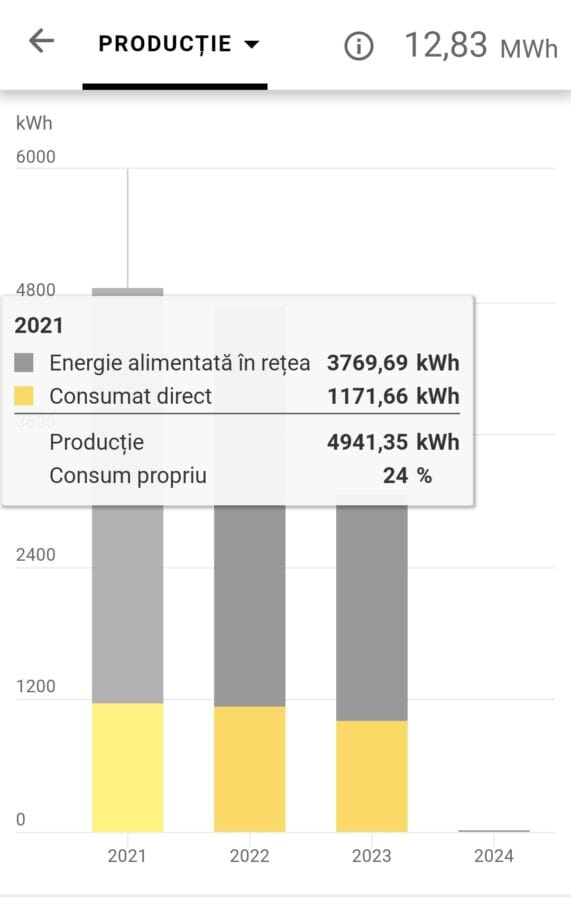
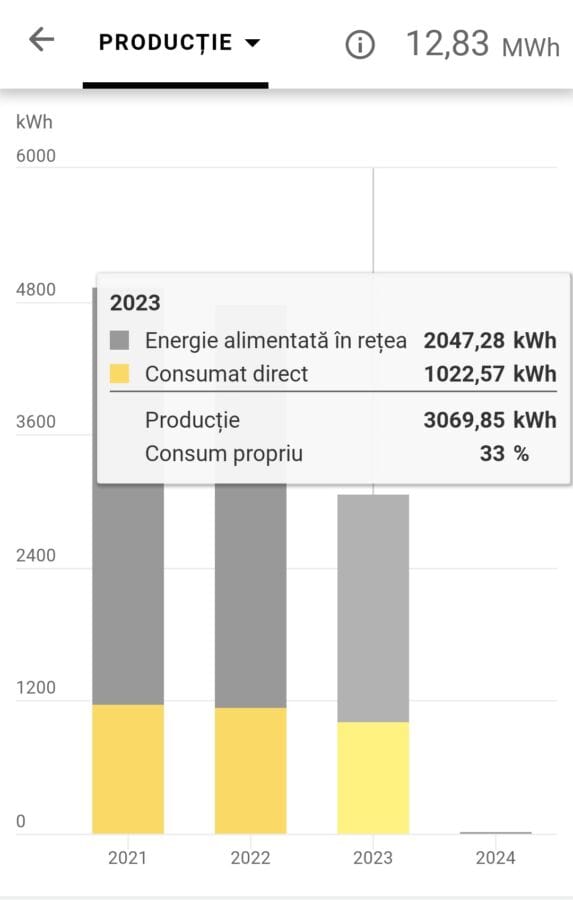
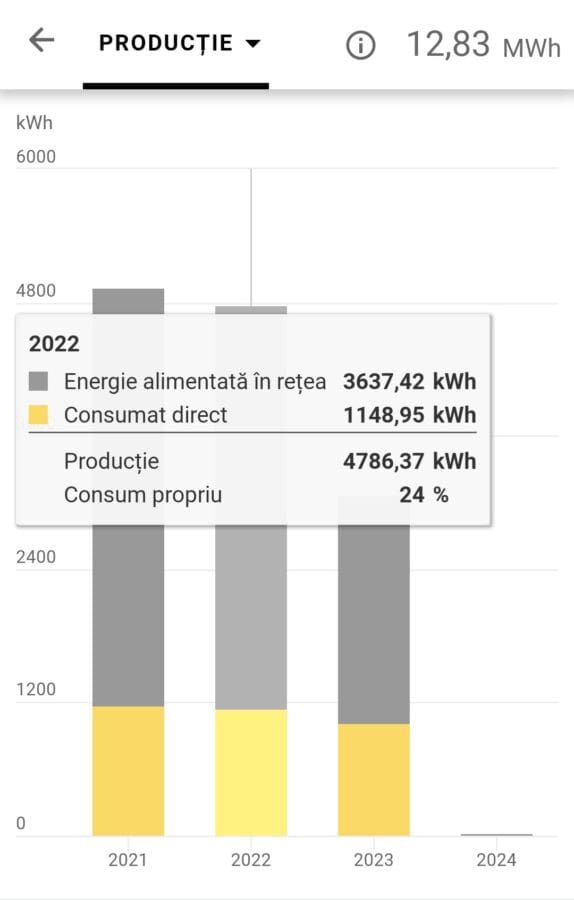
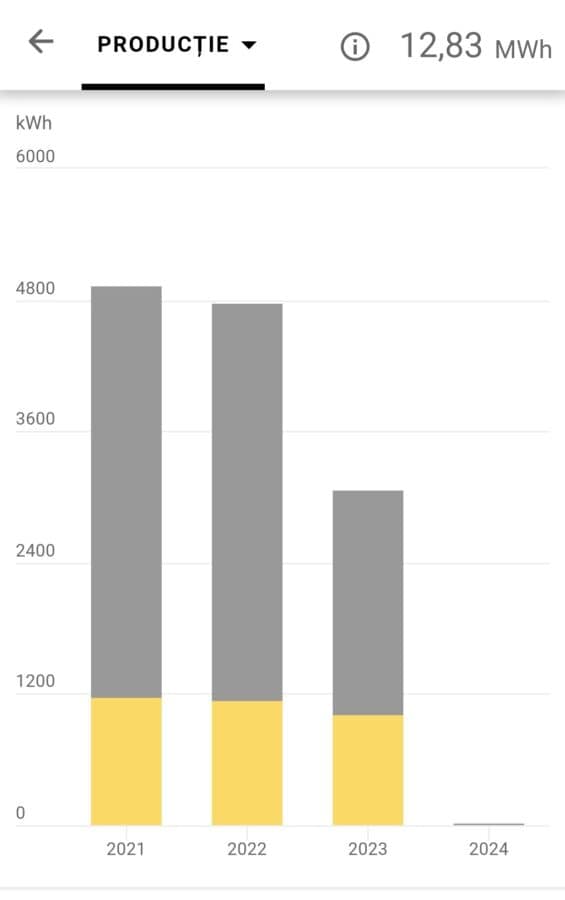
We opted for meter reading. In Annex 3, the price set by E.ON was 196.56 lei/MWh for both the sale of energy by the prosumer and the purchase.
The first bill came in May 2021, with various regularizations, so irrelevant.
But the invoices that came later can mess up even a scholar’s mind: minus amounts, followed by plus amounts, then minus again, so much so that to be able to pay you had to go to an office to find out what you had to pay.
The bills from the consumer usually come with small amounts marked with a minus. The others come as payable, but often you don’t know what the final amount is, because there are plus and minus amounts.
The complication is even greater when you have a DUO contract, although there are separate gas and electricity payments, but the billing is for different periods.
A 3-step explanatory guide on the website tries to help. There we learn that „it is important to know that ANRE, through Ord. 5 and 14/2023, has made changes to the Regulation on the supply of electricity and natural gas, changes with a major impact on the format and content of the consumption invoice. Today, more than 80% of the layout and content of the bill is determined by ANRE”.
All in all, I can say that the amounts paid for gas plus electricity in 2022 did not exceed 2,850 lei, and in 2023 approx. 3,100 lei, for a house with attic with 7 rooms, kitchen, 2 bathrooms (215 sqm footprint), yard, annexes. With the specification that the price is currently capped by the state.
Romania does not want more green energy
One of the problems faced by prosumers in big cities is related to interruptions caused by the electricity distribution system.
In the summer period, when the amount of energy produced by photovoltaic panels is at its maximum, the system, which is not modernized and not adapted to transform and transport the energy received, throws the prosumer out.
If you look at the inverter screen, you see a numerical code that signals that the sending of energy to the national system is interrupted. At peak time, when the amount delivered by prosumers is at its maximum, the distribution system breaks down.
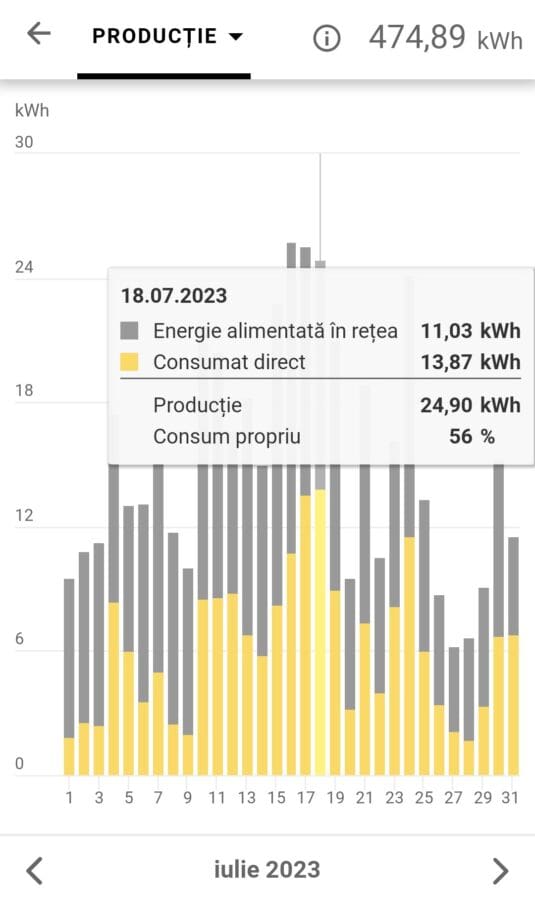
Basically, the transformers are old, the distribution network, the relays are often from Ceausescu’s time, so they can’t cope.
The sinful transformer automatically switches off the inverters to protect itself. The bottom line is that instead of receiving and storing large amounts of green electricity sent in by prosumers, the national system forces you to produce less.
That’s after it’s funded you with European money to put up photovoltaic panels.
In 2023, when the number of prosumers increased as a result of the energy crisis, the phenomenon was more pronounced than ever. For the prosumer, it means higher costs, because they will have to buy more energy from the national grid and the amount compensated will be lower.
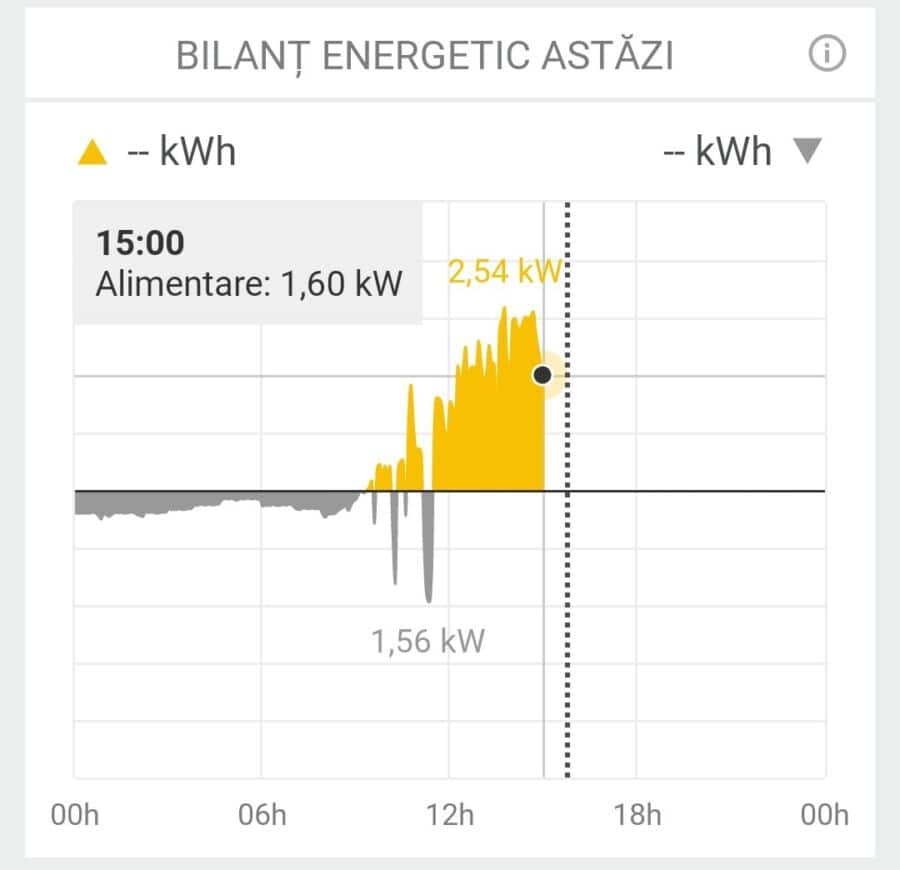
Comparing, I see that in 2022 we fed 3,368 KWh into the grid and consumed 24%, while in 2023, when inverter interruptions were frequent, we produced only 2,047 KWh and consumed 33%.
Everything can be tracked on your phone via the Solar.web app.
Who is the entity that should check the situation and enforce grid upgrades?
ANRE, the National Energy Regulatory Authority. Is ANRE doing the right thing? It doesn’t. There are eight electricity distribution operators, but the situation is not rosy on any of the networks.
I am a prosumer since 2021 and I feel on my own. Just like everyone else, who are either adapting, at great cost, their own consumption system, such as a water heater or another consumer. In the words of one hater, „Get your electric car and power it at home!”.
From discussions with experts, I have concluded that there are links and common interests between the big distribution companies and the political environment: neither the companies nor the politicians have an interest in the voter/consumer having energy independence.
The cost game, the compensation game, is used in election campaigns, the clearest example being Hungary, where lowering energy prices at political whim is a successful tool in the hand of Viktor Orban.
Follow PressHUB on Google News!
